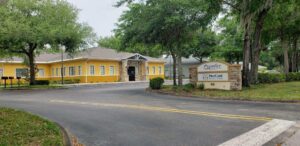Last time you stopped by, you read about the protocol for diagnosing shoulder injuries. First, we shared treatment options for Clavicle fractures and Proximal Humerus fractures. In today’s blog, we are sharing treatment options for physical therapy after fractures.
Scapula fractures:
Lucky for those that endure this pain, most scapula fractures can be treated without surgery. Treatment involves mobilization to prevent further injury or pain. This is done with a sling or shoulder immobilizer given to you or purchased on your own, only if approved by the doctor.
 Icing and pain medicine will most likely be in the picture as well. A patient with a scapula fracture will be examined for additional injuries or less serious issues. Only about ten to twenty percent of scapula fractures require surgery.
Icing and pain medicine will most likely be in the picture as well. A patient with a scapula fracture will be examined for additional injuries or less serious issues. Only about ten to twenty percent of scapula fractures require surgery.
Fractures that require surgery usually have fracture fragments where the shoulder joint is. Sometimes there are additional fractures in the clavicle. The surgery involves fixation of the fracture fragments.
This is done with plates and screws. For this reason, there must be great communication between the surgeon and the physical therapist. Our physical therapists, are very thorough with medical records and treatments plan for each unique recovery.
Some surgeries require much more involved physical therapy while other need longer rest and recovery times. Follow ups post-operation may be too late to discuss physical therapy as it may be too late to get set up. Now, let’s move onto shoulder separations.
Shoulder separations:
Yes, we acknowledge this sounds very gruesome, but recovery does not have to be. Shoulder separations are not often caused by car accidents like clavicle fractures. Although we aim to treat injuries caused by accidents predominantly, we thought shoulder separations are worth discussing as we do treat injuries that are not caused by car accidents.
Treatment for this depends on the severity just like any other injury. It is also determined by the direction of the separation and the physical requirements of the patient. Injuries that are less severe are most often treated without surgery.
 More severe separations such as those in an upward direction, dislocations in the backward direction, and dislocations in the downward direction often require surgery. Of course, you will not know which shoulder separation you have until your examination and imaging tests. Once you know, you will discuss what the next steps are.
More severe separations such as those in an upward direction, dislocations in the backward direction, and dislocations in the downward direction often require surgery. Of course, you will not know which shoulder separation you have until your examination and imaging tests. Once you know, you will discuss what the next steps are.
Treatments for shoulder separations after surgery are different than the treatment plan of injures that were not surgically repaired. Surgery involves repair of the ligaments. Professional athletes and manual laborers are most often treated with surgery because they would like to be back in action as soon as possible and just as strong as before.
More physical therapy after fractures:
However, the results are often unpredictable. Also, every body is different and responds to surgery differently. Doctors cannot tell if the swelling, scar tissues, or other lasting marks of the surgery will leave lasting effects either. Next week, we are sharing about shoulder dislocations.
You may experience a shoulder dislocation in a car accident, especially if you were not wearing your safety harness, or seat belt, in the proper position. Call ProCare Health & Rehab Centers for trustworthy, experienced advice if you endure any injuries during this trying time.
Staff Writer



